Trey'von Knowles's Blog, page 13
June 2, 2025
Transylvania's Gábor People

The Gábor people are a traditional community of Roma in Transylvania, Romania, known for their distinct cultural practices and strong traditions. They are considered an aristocratic caste within the Romani population, characterized by their endogamous marriages (marriage within their own group) and adherence to strict social rules.
Here's a more detailed look:
Location:
The Gábor community is primarily located in the village of Karácsonyfalva (also known as Cristeș) and surrounding areas in Transylvania.
Traditions:
The Gábor people are known for maintaining strict cultural practices, including traditional dress (long skirts for women, black hats for men), and specific customs related to marriage, family, and social life.
Social Structure:
They are considered an aristocratic caste within the Roma population, with strong emphasis on community boundaries and adherence to traditional roles.
Religious Affiliation:
Many Gábor Roma are Adventists.
Economic Activities:
Traditionally, Gábor men have been engaged in trading and craftsmanship, while women have been involved in raising families.
Endogamy:
The Gábor people practice endogamy, marrying exclusively within their own community, which is seen as a way to preserve their culture and identity.
Education:
Girls are typically taken out of school around the age of 11 to prepare for marriage, while boys continue their education until they are 14, according to a documentary on the Gábor community.
June 1, 2025
Every Christian Every Muslim Must Unite
Trey Knowles” “Every Christian Every Muslim Must Unite” Trey Knowles encourages Christian and Muslim believers to put on the armor of God to resist the schemes of the devil and stand against evil, and unite in love. we will fight with God mighty hand with his glory. We will respond to evil with good, not to kill, but to demonstrate God’s mighty power.
We as believers fight for the cause of Allah, (God) whereas disbelievers fight for the cause of the Devil and his ways and culture.
The Bible and the Quran highlights the importance of standing against injustice and oppression and the evil in the world.
Every Christian and Every Muslim on the planet Must Unite against the powers of evil.
https://crosssides.blogspot.com/May 31, 2025
Opium Wars : When History Repeats
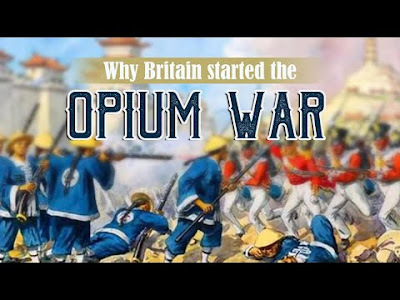
Opium Wars: When History Repeats
The Opium Wars (simplified Chinese: 鸦片战争; traditional Chinese: 鴉片戰爭; pinyin: Yāpiàn zhànzhēng) were two conflicts waged between China and Western powers during the mid-19th century.
The First Opium War was fought from 1839 to 1842 between China and Britain. It was triggered by the Chinese government's campaign to enforce its prohibition of opium, which included destroying opium stocks owned by British merchants and the British East India Company. The British government responded by sending a naval expedition to force the Chinese government to pay reparations and allow the opium trade. The Second Opium War was waged by Britain and France against China from 1856 to 1860, and consequently resulted in China being forced to legalise opium.
In each war, the superior military advantages enjoyed by European forces led to several easy victories over the Chinese military, with the consequence that China was compelled to sign the unequal treaties to grant favourable tariffs, trade concessions, reparations and territory to Western powers. The two conflicts, along with the various treaties imposed during the century of humiliation, weakened the Chinese government's authority and forced China to open specified treaty ports (including Shanghai) to Western merchants. In addition, China ceded sovereignty over Hong Kong to the British Empire, which maintained control over the region until 1997.
First Opium War
The First Opium War broke out in 1839 between China and Britain and was fought over trading rights (including the right of free trade) and Britain's diplomatic status among Chinese officials. In the eighteenth century, China enjoyed a trade surplus with Europe, trading porcelain, silk, and tea in exchange for silver. By the late 18th century, the British East India Company (EIC) expanded the cultivation of opium in the Bengal Presidency, selling it to private merchants who transported it to China and covertly sold it on to Chinese smugglers. By 1797, the EIC was selling 4,000 chests of opium (each weighing 77 kg) to private merchants per annum.
In earlier centuries, opium was utilised as a medicine with anesthetic qualities, but new Chinese practices of smoking opium recreationally increased demand tremendously and often led to smokers developing addictions. Successive Chinese emperors issued edicts making opium illegal in 1729, 1799, 1814, and 1831, but imports grew as smugglers and colluding officials in China sought profit. Some American merchants entered the trade by smuggling opium from Turkey into China, including Warren Delano Jr. and Francis Blackwell Forbes; in American historiography this is sometimes referred to as the Old China Trade. By 1833, the Chinese opium trade soared to 30,000 chests. British and American merchants sent opium to warehouses in the free-trade port of Canton, and sold it to Chinese smugglers.
In 1834, the EIC's monopoly on British trade with China ceased, and the opium trade burgeoned. Partly concerned with moral issues over the consumption of opium and partly with the outflow of silver, the Daoguang Emperor charged Governor General Lin Zexu with ending the trade. In 1839, Lin published in Canton an open letter to Queen Victoria requesting her cooperation in halting the opium trade.
The letter never reached the Queen. It was later published in The Times as a direct appeal to the British public for their cooperation. An edict from the Daoguang Emperor followed on 18 March, emphasising the serious penalties for opium smuggling that would now apply henceforth. Lin ordered the seizure of all opium in Canton, including that held by foreign governments and trading companies (called factories), and the companies prepared to hand over a token amount to placate him. Charles Elliot, Chief Superintendent of British Trade in China, arrived 3 days after the expiry of Lin's deadline, as Chinese troops enforced a shutdown and blockade of the factories. The standoff ended after Elliot paid for all the opium on credit from the British government (despite lacking official authority to make the purchase) and handed the 20,000 chests (1,300 metric tons) over to Lin, who had them destroyed at Humen.
Elliott then wrote to London advising the use of military force to resolve the dispute with the Chinese government. A small skirmish occurred between British and Chinese warships in the Kowloon Estuary on 4 September 1839. After almost a year, the British government decided, in May 1840, to send a military expedition to impose reparations for the financial losses experienced by opium traders in Canton and to guarantee future security for the trade. On 21 June 1840, a British naval force arrived off Macao and moved to bombard the port of Dinghai. In the ensuing conflict, the Royal Navy used its superior ships and guns to inflict a series of decisive defeats on Chinese forces.
The war was concluded by the Treaty of Nanking (Nanjing) in 1842, the first of the Unequal treaties between China and Western powers. The treaty ceded the Hong Kong Island and surrounding smaller islands to Britain, and established five cities as treaty ports open to Western traders: Shanghai, Canton, Ningbo, Fuzhou, and Xiamen (Amoy).
The treaty also stipulated that China would pay a twenty-one million dollar payment to Britain as reparations for the destroyed opium, with six million to be paid immediately, and the rest through specified installments thereafter. Another treaty the following year gave most favoured nation status to Britain and added provisions for British extraterritoriality, making Britain exempt from Chinese law. France secured several of the same concessions from China in the Treaty of Whampoa in 1844.
Second Opium War
In 1853, northern China was convulsed by the Taiping Rebellion, which established its capital at Nanjing. In spite of this, a new Imperial Commissioner, Ye Mingchen, was appointed at Canton, determined to stamp out the opium trade, which was still technically illegal. In October 1856, he seized the Arrow, a ship claiming British registration, and threw its crew into chains. Sir John Bowring, Governor of British Hong Kong, called up Rear Admiral Sir Michael Seymour's East Indies and China Station fleet, which, on 23 October, bombarded and captured the Pearl River forts on the approach to Canton and proceeded to bombard Canton itself, but had insufficient forces to take and hold the city.
On 15 December, during a riot in Canton, European commercial properties were set on fire and Bowring appealed for military intervention. The execution of a French missionary inspired support from France. The United States and Russia also intervened in the war.
Britain and France now sought greater concessions from China, including the legalization of the opium trade, expanding of the transportation of coolies to European colonies, opening all of China to British and French citizens and exempting foreign imports from internal transit duties. The war resulted in the 1858 Treaty of Tientsin (Tianjin), in which the Chinese government agreed to pay war reparations for the expenses of the recent conflict, open a second group of ten ports to European commerce, legalize the opium trade, and grant foreign traders and missionaries rights to travel within China.
China was also required to use diplomacy in the Western, egalitarian style instead of their normal way of conducting business with lesser states through a tribute system. This treaty led to the era in Chinese history known as the "Century of Humiliation". This term refers to China's loss of control of many territories to its enemies after being forced into treaties which they considered unfair. Even though the treaties were signed in 1858, there was still Chinese resistance to its principles including the residence of foreign ambassadors in Beijing. The British continued to attack the Chinese. After a second phase of fighting which included the sack of the Old Summer Palace and the occupation of the Forbidden City palace complex in Beijing, the treaty was confirmed by the Convention of Peking in 1860.
Cultural relics
In February 1860, the British and French imperialist authorities again appointed Elgin and Grotto as plenipotentiaries respectively, leading more than 15,000 British troops and about 7,000 French troops to expand the war against China. The British and French forces invaded Beijing, and the Qing emperor fled to Chengde. The British and French forces broke into the Old Summer Palace, looted jewelry, and burned it. Among the cultural relics that were looted were the well-known Old Summer Palace bronze heads.
On the morning of 7 October, the French army broke into the Old Summer Palace and began to rob it. British soldiers who arrived in the afternoon also joined the robbery, and the most precious things in the Old Summer Palace were looted. All twelve bronze statues of animal heads began to be lost overseas. On 18 October, the Old Summer Palace was burned down by British soldiers, and France refused to provide aid. The fire burned for three days and nights, razing the buildings of the Old Summer Palace to the ground and destroying nearby royal properties.
As of December 2020, seven of the twelve bronze statues have been found and returned to China. The whereabouts of the remaining five are still unknown
!function(r,u,m,b,l,e){r._Rumble=b,r[b]||(r[b]=function(){(r[b]._=r[b]._||[]).push(arguments);if(r[b]._.length==1){l=u.createElement(m),e=u.getElementsByTagName(m)[0],l.async=1,l.src="https://rumble.com/embedJS/u2kzfpi&qu..., document, "script", "Rumble");Rumble("play", {"video":"v6rylc5","div":"rumble_v6rylc5"});https://crosssides.blogspot.com/Slavonic Apocalypse
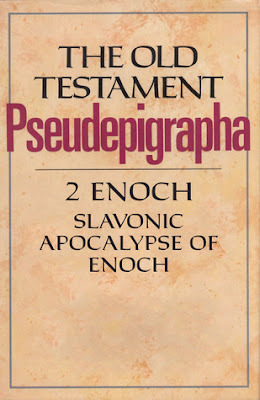
The term "Slavonic Apocalypse" often refers to 2 Enoch, also known as the Slavonic Book of Enoch or the Secrets of Enoch. It is an ancient Jewish pseudepigraphal text preserved in the Slavonic language.
The Slavonic Apocalypse (2 Enoch) primarily describes:
Enoch's celestial ascent: The core of the text revolves around the patriarch Enoch, the seventh generation after Adam, being taken by angels to journey through the seven heavens.
His initiation into heavenly mysteries: Enoch gains access to divine secrets and knowledge about creation and the universe during his heavenly ascent.
His luminous metamorphosis: Enoch undergoes a transformation near the Throne of Glory, becoming a celestial being. This transformation is linked to themes of the "ointment of glory," a luminous substance that signifies his new, heavenly nature.
Themes of redemption and the "ointment of glory": The text explores the idea that Enoch, through his righteousness and ascent, is able to "carry away the sin of humankind," according to Marquette University specifically addressing the primeval sin of Adam. The "ointment of glory" he receives in heaven plays a significant role in this transformative and redemptive process.
The structure and cosmology of heaven: The text presents a detailed cosmology of the seven heavens, describing their inhabitants and Enoch's experiences in each one.
Adamic and Melchizedek traditions: The book incorporates traditions related to Adam, portraying him as a microcosm and exploring the origins of his name. It also includes a unique account of the birth and role of Melchizedek.
Jewish apocalypticism and mysticism: The Slavonic Apocalypse draws upon Jewish apocalyptic traditions but also incorporates new mystical elements, serving as a bridge between early apocalyptic writings and later Jewish mystical traditions like Merkabah mysticism.
In essence, the Slavonic Apocalypse (2 Enoch) is a fascinating exploration of Jewish mystical and cosmological ideas, focusing on the transformative journey of Enoch and his role as a redeemer figure.
The term "slavish language" is not a recognized term in linguistics. It seems to be a combination of the word "slavish" which means servile, and "language." The Slavic languages are a diverse group of Indo-European languages spoken by millions of people across Europe and Asia, and it is possible the user is interested in this language family.
Here's a more helpful explanation of what the user might be looking for:
Slavic Languages:
The Slavic languages are a branch of the Indo-European language family. They are spoken by a large number of people in Eastern Europe, the Balkans, parts of Central Europe, and northern Asia.
Key Features of Slavic Languages:
Proximity:
Slavic languages are closely related to each other, sharing common roots in Proto-Slavic.
Diversity:
The Slavic languages have diverse forms, with three main subgroups: East Slavic, West Slavic, and South Slavic.
Geographic Distribution:
Slavic languages are spoken across a vast geographical area, including countries like Russia, Ukraine, Belarus, Poland, Czech Republic, Slovakia, and many Balkan nations.
Examples of Slavic Languages:
East Slavic: Russian, Ukrainian, Belarusian.
West Slavic: Polish, Czech, Slovak.
South Slavic: Bulgarian, Serbian, Croatian, Macedonian, Slovenian, Bosnian.
In summary: The user is likely asking about the Slavic languages, a family of related languages spoken by millions of people across Europe and Asia, rather than a "slavish language" which is not a recognized term.
Slavish Language:
The term "slavish language" is not a recognized term in linguistics. It seems to be a combination of the word "slavish" which means servile, and "language." The Slavic languages are a diverse group of Indo-European languages spoken by millions of people across Europe and Asia, and it is possible the user is interested in this language family.
Here's a more helpful explanation of what the user might be looking for:
Slavic Languages:
The Slavic languages are a branch of the Indo-European language family. They are spoken by a large number of people in Eastern Europe, the Balkans, parts of Central Europe, and northern Asia.
Key Features of Slavic Languages:
Proximity:
Slavic languages are closely related to each other, sharing common roots in Proto-Slavic.
Diversity:
The Slavic languages have diverse forms, with three main subgroups: East Slavic, West Slavic, and South Slavic.
Geographic Distribution:
Slavic languages are spoken across a vast geographical area, including countries like Russia, Ukraine, Belarus, Poland, Czech Republic, Slovakia, and many Balkan nations.
Examples of Slavic Languages:
East Slavic: Russian, Ukrainian, Belarusian.
West Slavic: Polish, Czech, Slovak.
South Slavic: Bulgarian, Serbian, Croatian, Macedonian, Slovenian, Bosnian.
In summary: The user is likely asking about the Slavic languages, a family of related languages spoken by millions of people across Europe and Asia, rather than a "slavish language" which is not a recognized term.
https://crosssides.blogspot.com/The Delectable Negro
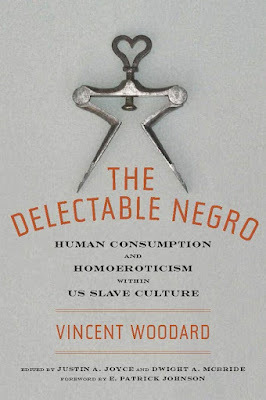
Scholars of US and transatlantic slavery have largely ignored or dismissed accusations that Black Americans were cannibalized. Vincent Woodard takes the enslaved person’s claims of human consumption seriously, focusing on both the literal starvation of the slave and the tropes of cannibalism on the part of the slaveholder, and further draws attention to the ways in which Blacks experienced their consumption as a fundamentally homoerotic occurrence. The Delectable Negro explores these connections between homoeroticism, cannibalism, and cultures of consumption in the context of American literature and US slave culture.
Utilizing many staples of African American literature and culture, such as the slave narratives of Olaudah Equiano, Harriet Jacobs, and Frederick Douglass, as well as other less circulated materials like James L. Smith’s slave narrative, runaway slave advertisements, and numerous articles from Black newspapers published in the nineteenth century, Woodard traces the racial assumptions, political aspirations, gender codes, and philosophical frameworks that dictated both European and white American arousal towards Black males and hunger for Black male flesh. Woodard uses these texts to unpack how slaves struggled not only against social consumption, but also against endemic mechanisms of starvation and hunger designed to break them. He concludes with an examination of the controversial chain gang oral sex scene in Toni Morrison’s Beloved, suggesting that even at the end of the twentieth and beginning of the twenty-first century, we are still at a loss for language with which to describe Black male hunger within a plantation culture of consumption.
Available on Amazon https://www.amazon.com/Delectable-Negro-Consumption-Homoeroticism-Cultures/dp/0814794629
https://crosssides.blogspot.com/Edible People: Consumption of Slaves and Foreigners
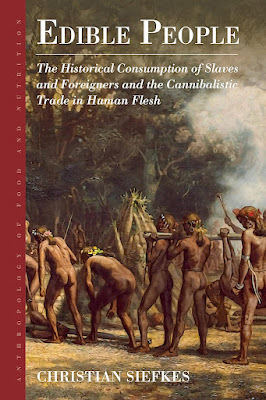
While human cannibalism has attracted considerable notice and controversy, certain aspects of the practice have received scant attention. These include the connection between cannibalism and xenophobia: the capture and consumption of unwanted strangers. Likewise ignored is the connection to slavery: the fact that in some societies slaves and persons captured in slave raids could be, and were, killed and eaten. This book explores these largely forgotten practices and ignored connections while making explicit the links between cannibal acts, imperialist influences and the role of capitalist trading practices. These are highly important for the history of the slave trade and for understanding the colonialist history of Africa.
Available on Amazon https://www.amazon.com/Edible-People-Consumption-Cannibalistic-Anthropology/dp/1800736134
https://crosssides.blogspot.com/Did King James Kill his Mother
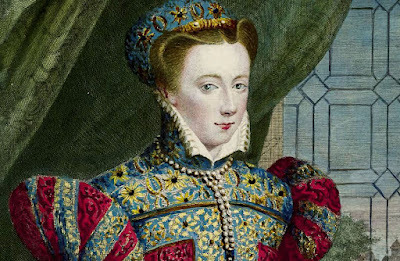
The statement "Rain king james kill mother" is incorrect. It's a misinterpretation of historical events involving King James VI of Scotland (later James I of England) and his mother, Mary, Queen of Scots. Mary Queen of Scots was executed by Queen Elizabeth I of England, not killed by her son James. James was King of Scotland when his mother was executed and he did little to intervene.
After 19 years of imprisonment, Mary, Queen of Scots is beheaded at Fotheringhay Castle in England for her complicity in a plot to murder Queen Elizabeth I.
In 1542, while just six days old, Mary ascended to the Scottish throne upon the death of her father, King James V. Her mother sent her to be raised in the French court, and in 1558 she married the French dauphin, who became King Francis II of France in 1559 but died the following year. After Francis’ death, Mary returned to Scotland to assume her designated role as the country’s monarch.
In 1565, she married her English cousin Lord Darnley in order to reinforce her claim of succession to the English throne after Elizabeth’s death. In 1567, Darnley was mysteriously killed in an explosion at Kirk o’ Field, and Mary’s lover, the Earl of Bothwell, was the key suspect. Although Bothwell was acquitted of the charge, his marriage to Mary in the same year enraged the nobility. Mary brought an army against the nobles, but was defeated and imprisoned at Lochleven, Scotland, and forced to abdicate in favor of her son by Darnley, James.
In 1568, Mary escaped from captivity and raised a substantial army but was defeated and fled to England. Queen Elizabeth initially welcomed Mary but was soon forced to put her friend under house arrest after Mary became the focus of various English Catholic and Spanish plots to overthrow Elizabeth. Nineteen years later, in 1586, a major plot to murder Elizabeth was reported, and Mary was brought to trial. She was convicted for complicity and sentenced to death.
On February 8, 1587, Mary Queen of Scots was beheaded for treason. Her son, King James VI of Scotland, calmly accepted his mother’s execution, and upon Queen Elizabeth’s death in 1603 he became king of England, Scotland and Ireland.
https://crosssides.blogspot.com/Was King James Gay?
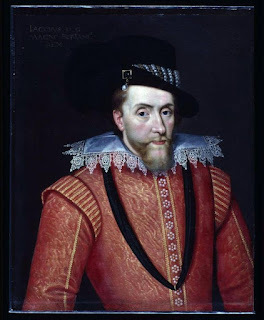
King James I's life and reign provide a significant lens through which to examine the history of homosexuality in 16th and 17th century England. While same-sex relationships were not explicitly legalized or recognized, they were also not universally condemned. The king's close relationships with male favorites, particularly Robert Carr and George Villiers, have been interpreted as evidence of homoerotic attraction, although this interpretation is still debated.
Historical Context and Debate:
Limited Legal Framework:
The term "homosexuality" did not exist in the way it does today. Laws focused on "sodomy," which was defined as sex with a male and specifically excluded sexual acts between women.
Social Norms and Interpretations:
Male-male relationships, especially in courtly settings, were often viewed as public expressions of friendship and patronage rather than necessarily sexual. Sharing beds, exchanging kisses, and other displays of affection were common practices, even among heterosexual men, and these actions are often cited as evidence of King James's sexual preferences, but can also be interpreted as displays of intimacy within the context of his court.
Historians' Perspectives:
Historical accounts of James's life have varied. Some have focused on moral condemnations of his supposed homosexuality, while others have re-evaluated his reign and separated his sexuality from broader judgments about his character and leadership.
Impact of the Civil War:
Some historians, like Michael Young, argue that King James's homosexuality, particularly his spending of state funds on his favorites, may have contributed to the tensions and unrest that led to the English Civil War.
Key Figures and Relationships:
Robert Carr:
A close confidante and advisor to King James, Carr was known for his beauty and was the object of the King's affections.
George Villiers:
Another favorite of King James, Villiers became the Duke of Buckingham and held significant political power.
In Conclusion:
King James's life and relationships provide valuable insights into the complexities of same-sex relationships and the evolving understanding of sexuality in early modern England. While historical accounts often focus on moral judgments and the King's relationships with his male favorites, it is crucial to consider the broader social context and the ambiguities of interpretation in order to gain a more nuanced understanding of this historical period.
https://crosssides.blogspot.com/If Donald Trump Kicks Out Blacks
Trey Knowles’ “If Donald Trump Kicks Out Blacks” If Donald Trump makes every black or brown person in the United States leave for a master race. It could be a blessing. The Bible says 1/3 of the earth was burn up. If think God does not love his people, then you don't know God. Test and see God mighty power.
https://crosssides.blogspot.com/Negus" translates to "king"
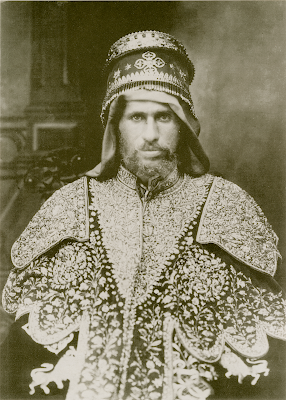
In the context of Ethiopia, "Negus" (ንጉሥ) is a title signifying a ruler, king, or emperor, particularly within the Axumite and Solomonic Dynasties. It's a Semitic term related to "king" or "ruler," with cognates found in various other Semitic languages like Aramaic and Akkadian. The most famous usage is "Negusa Nagast" (ንጉሥ ንጉሥ), meaning "King of Kings" and the title held by Ethiopian emperors.
Here's a more detailed explanation:
General meaning:
"Negus" translates to "king" or "ruler" in the Ge'ez language, an ancient Semitic language of Ethiopia.
Historical context:
Prior to the Solomonic Dynasty, many Axumite and Zagwe rulers were known as "Negus".
Negusa Nagast:
This title, meaning "King of Kings" or "Emperor," is the most prominent usage of the word, particularly associated with the Solomonic Dynasty. The most famous holder of this title was Haile Selassie, whose full title was "By the Conquering Lion of the Tribe of Judah, His Imperial Majesty Haile Selassie I, King of Kings of Ethiopia, Lord of Lords, Elect of God," according to Wikipedia.
Regional titles:
"Negus" could also be used for regional rulers within the Ethiopian empire. For example, "Bahr Negus" (ባሕር ንጉሥ, "King of the Sea") was a title for the ruler of the territories north of the Mareb River, according to Wikipedia.
https://crosssides.blogspot.com/


